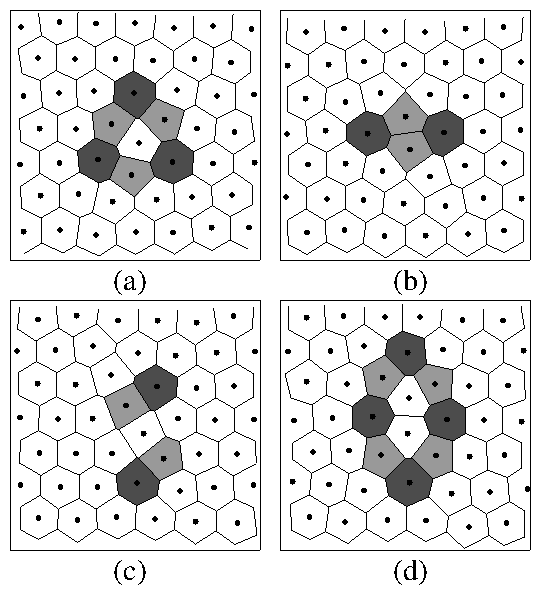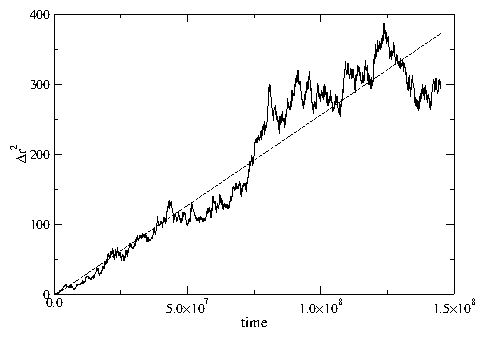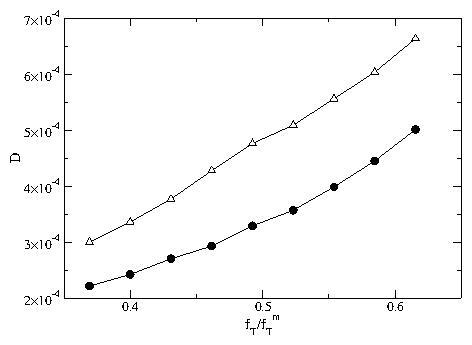 Figure 2: Voronoi cell construction for commonly observed
interstitial defect configurations. Colloid positions
are indicated by dots. The Voronoi cells are colored according to the
coordination number zi of the colloids: white, zi=6; light grey,
zi=7; dark grey, zi=5.
Only a 6a0 ×6a0 portion of the full system is shown.
(a) A threefold symmetric interstitial, I3.
(b) A twofold symmetric interstitial, I2.
(c) A disjoint twofold symmetric interstitial, I2d.
(d) A fourfold symmetric excited configuration I′4.
Figure 2: Voronoi cell construction for commonly observed
interstitial defect configurations. Colloid positions
are indicated by dots. The Voronoi cells are colored according to the
coordination number zi of the colloids: white, zi=6; light grey,
zi=7; dark grey, zi=5.
Only a 6a0 ×6a0 portion of the full system is shown.
(a) A threefold symmetric interstitial, I3.
(b) A twofold symmetric interstitial, I2.
(c) A disjoint twofold symmetric interstitial, I2d.
(d) A fourfold symmetric excited configuration I′4.
|


